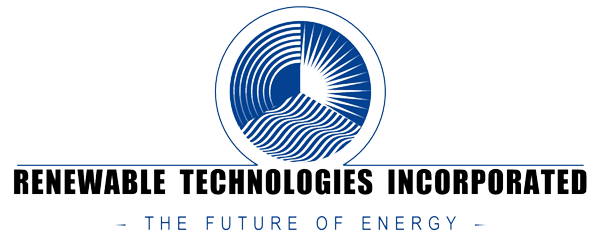The future of energy is in solar power. According to a report by the International Energy Agency, solar is the world’s fastest-growing renewable energy source. In fact, it is growing so quickly that it is expected to become the world’s biggest source of electricity by 2050. But what does this mean for you and your business? And how can you take advantage of this growing industry? Keep reading to learn more about solar power and the best solar installers “near me”!
What Is the Fastest Growing Renewable Energy Industry?
“The world does not need to exploit its entire renewable resource—just 1% is enough to replace all fossil fuel usage. Each year we are fueling the climate crisis by burning three million years of fossilized sunshine in coal, oil, and gas while we use just 0.01% of daily sunshine.” – Climate Think-Tank Chairman Harry Benham
The technology for solar power has come a long way from its roots way back in the late 1800s—however, each year scientists are able to fine-tune efficiency and recyclability of photovoltaic (PV) systems, causing the price of installation to drop, lifespan to increase, and the turnaround time for a Return On Investment (ROI) to shorten. This is one of the many reasons that solar power is the fastest growing renewable energy industry—in fact, in the last decade or so, it has seen exponential growth. It is projected to dominate the energy sector by the year 2050, replacing hydroelectric power as the primary producer of energy in the country.
In second place in terms of fastest growth comes wind energy, which relies on converting kinetic energy into electricity. However, solar power is a renewable energy source with one of the lowest carbon footprints of any source of power alternative to fossil fuels, with 20 times less carbon emissions than coal or other fossil fuels. While PV cells obviously do better in sunnier climates with clearer skies, they can still collect energy on cloudy or foggy days as well, though at about half their usual rate.
However, solar power production is increasing across the world. In the years between 2016 and 2019, solar electricity generation more than doubled in billion kilowatt-hours (kWh) across the globe. As prices continue to decrease, infrastructure continues to be built, and technology continues to improve, it’s no wonder this net-zero carbon emissions power source has caught so many investors’ attention. Not only is solar power the fastest growing renewable energy source on the planet, but it is also increasingly becoming the most affordable as well. What’s more, the U.S. Department of Energy (DOE) has a plan to produce 40% of the nation’s energy using solar technology by 2035, creating 1.5 million jobs in the process.
What Is a Solar Farm?
Creating infrastructure for solar power means installing more PV panels, which most commonly either go atop rooftops or are installed in rows in fields. A large collection of continuous PV panels is often referred to as a solar farm, operating much the same way as a power plant in terms of generating energy for consumers.
Typically, solar farms are installed on the ground over a wide area in order to capture the most sunlight as possible. This requires a significant amount of acreage, which is why some clever farmers have found a twofold benefit to working their land: harvesting crops and harnessing solar energy on the same plot. Referred to as “agrovoltaics,” this practice involves protecting crops from potentially harmful solar exposure and loosing excessive amounts of soil moisture while harnessing the sun’s energy at the same time—generating electricity and saving water in one move.
Can Solar Power Be Stored?
Fortunately for solar panel participants who live in areas that are affected by seasonal changes in weather, it is possible to store extra, unspent energy harnessed in the summer or sunny days and utilize it later on, when skies are grey and overcast. During the process of harnessing the sun’s energy, solar panels will be hooked up to a photovoltaic (PV) system which stores unused energy in an electric battery bank. These are typically made from lead-acid, lithium-ion, and flow batteries. While lead-acid batteries are generally considered the most affordable form of solar power storage, they are not as efficient or long-lasting as their counterparts. Most solar power experts agree that lithium-ion batteries utilize the most current, efficient, and high-value technology. For more on solar battery backup systems, check out our recent article on the topic!
Are Solar Power Banks Worth It?
A productive solar power bank can cost anywhere on average between $12,000-$22,000 and, while this might seem like a hefty initial expense, it’s important to bear in mind that these systems end up paying for themselves in the long run. However, you might be able to get away with not purchasing as extensive of a solar battery setup if you live in an arid climate, like Arizona, that doesn’t experience long stretches of time without sunlight exposure.
Most people who install a photovoltaic system will see a return on their investment in financial savings on utility bills and making back the cost of installation between 5-10 years after they go solar. Given that most solar panels manufactured today have a lifespan of at least 25 years, this offers 15-20 years of financial savings—and even potential income by selling excess harnessed energy back to the local power grid.
Is Solar Power Technology Getting Better?
Yes, solar technology has come a long way since it first captivated scientists and inventors between 1839 and 1954, when the first silicon photovoltaic cell was developed. In fact, when solar panels were first produced, they operated at around a 15% efficiency rate, which has steadily improved over the last few decades. As of 2020, however, the National Renewable Energy Laboratory (NREL) in Golden, Colorado revealed a solar panel design with an efficiency rating of a whopping 47.1%, more than doubling the rate of energy transfer since the beginning of the refinement process with solar energy. To top things off, the cost of installing PV systems for commercially or residential use has fallen over 80% since 2010. Solar power has never been so affordable—and the technology just keeps getting better!
Solar Installers Near Me
When we take pause and reflect on the enduring power of the sun, it seems silly not to want to invest in this incredibly powerful, free resource rather than continuing our dependency on foreign energy that is also likely damaging the planet. In the example of agrivoltaic farmers like Byron Kominek of Jack’s Solar Garden in Boulder County, Colorado, a mere four acres of PV cells has the capacity to generate power for their produce production as well as a neighboring 300 homes. In thinking of climate solutions to create a better future for coming generations, integrations like this, in the words of Kominek, are a “rare win-win-win”—producing cost-effective energy in our literal backyard, saving water, and nurturing crops at the same time.
Are you ready to go solar and move the energy dialogue forward? Contact Renewable Technologies, Inc. today and talk to our solar panel experts about how PV systems can save you money, increase autonomy, and contribute to a better climate.

